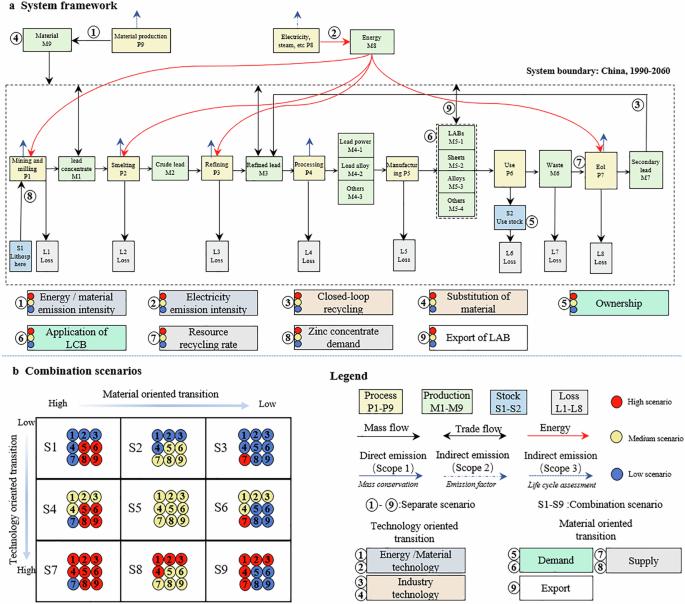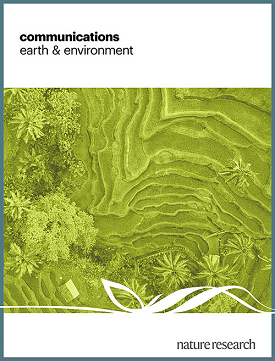以技术和材料为导向的战略可减少中国铅工业的碳排放
IF 8.1
1区 地球科学
Q1 ENVIRONMENTAL SCIENCES
引用次数: 0
摘要
要实现铅工业的碳中和,既需要技术脱碳,也需要全面减少剩余铅,以减轻堆放带来的环境风险。成功的去碳化途径需要将材料导向因素和技术导向因素协同整合。本研究建立了一个综合动态模型,以涵盖不同情景下各种工艺的温室气体排放和铅的冗余水平。结果表明,2021 年至 2060 年间,中国的累计铅消费量将达到 1.9024 亿吨,温室气体排放量将达到 2.5096 亿吨二氧化碳当量。以材料为导向的战略可以在短期内实现碳峰值,而以技术为导向的战略则可以实现长期优化。为了在减少污染和温室气体排放方面取得协同效应,必须优先考虑短期的回收率提高和长期的技术进步。此外,还应探索剩余铅的新用途。根据对铅行业过去和未来趋势的动态建模,短期提高回收率和长期技术进步相结合,可以显著减少中国铅行业的碳排放。本文章由计算机程序翻译,如有差异,请以英文原文为准。

Technology and material-oriented strategies can reduce lead industry carbon emissions in China
Achieving carbon neutrality in the lead industry requires both technological decarbonization and comprehensive reduction of surplus lead to mitigate environmental risks from stacking. A successful decarbonization pathway requires integrating material-oriented and technology-oriented factors synergistically. In this study, a comprehensive dynamic model was developed to encompass emissions of greenhouse gases throughout various processes and levels of lead redundancy across different scenarios. The results show that China’s cumulative lead consumption amounts to 190.24 million tonnes, with greenhouse gases emissions reach 250.96 million tonnes CO2-equivalent between 2021 and 2060. Strategies focused on material-oriented approaches to achieve an earlier carbon peak can yield short-term success, while a technology-oriented strategy demonstrates superior long-term optimization. In order to achieve synergistic outcomes in reducing pollution and greenhouse gas emissions, it is imperative to prioritize short-term improvements in recycling rates and long-term technological advancements. Additionally, exploring new applications for surplus lead should also be pursued. A combination of short-term recycling enhancements and long-term technological advancements can significantly reduce carbon emissions in the Chinese lead industry, according to dynamic modelling of past and future lead industry trends.
求助全文
通过发布文献求助,成功后即可免费获取论文全文。
去求助
来源期刊

Communications Earth & Environment
Earth and Planetary Sciences-General Earth and Planetary Sciences
CiteScore
8.60
自引率
2.50%
发文量
269
审稿时长
26 weeks
期刊介绍:
Communications Earth & Environment is an open access journal from Nature Portfolio publishing high-quality research, reviews and commentary in all areas of the Earth, environmental and planetary sciences. Research papers published by the journal represent significant advances that bring new insight to a specialized area in Earth science, planetary science or environmental science.
Communications Earth & Environment has a 2-year impact factor of 7.9 (2022 Journal Citation Reports®). Articles published in the journal in 2022 were downloaded 1,412,858 times. Median time from submission to the first editorial decision is 8 days.
 求助内容:
求助内容: 应助结果提醒方式:
应助结果提醒方式:


